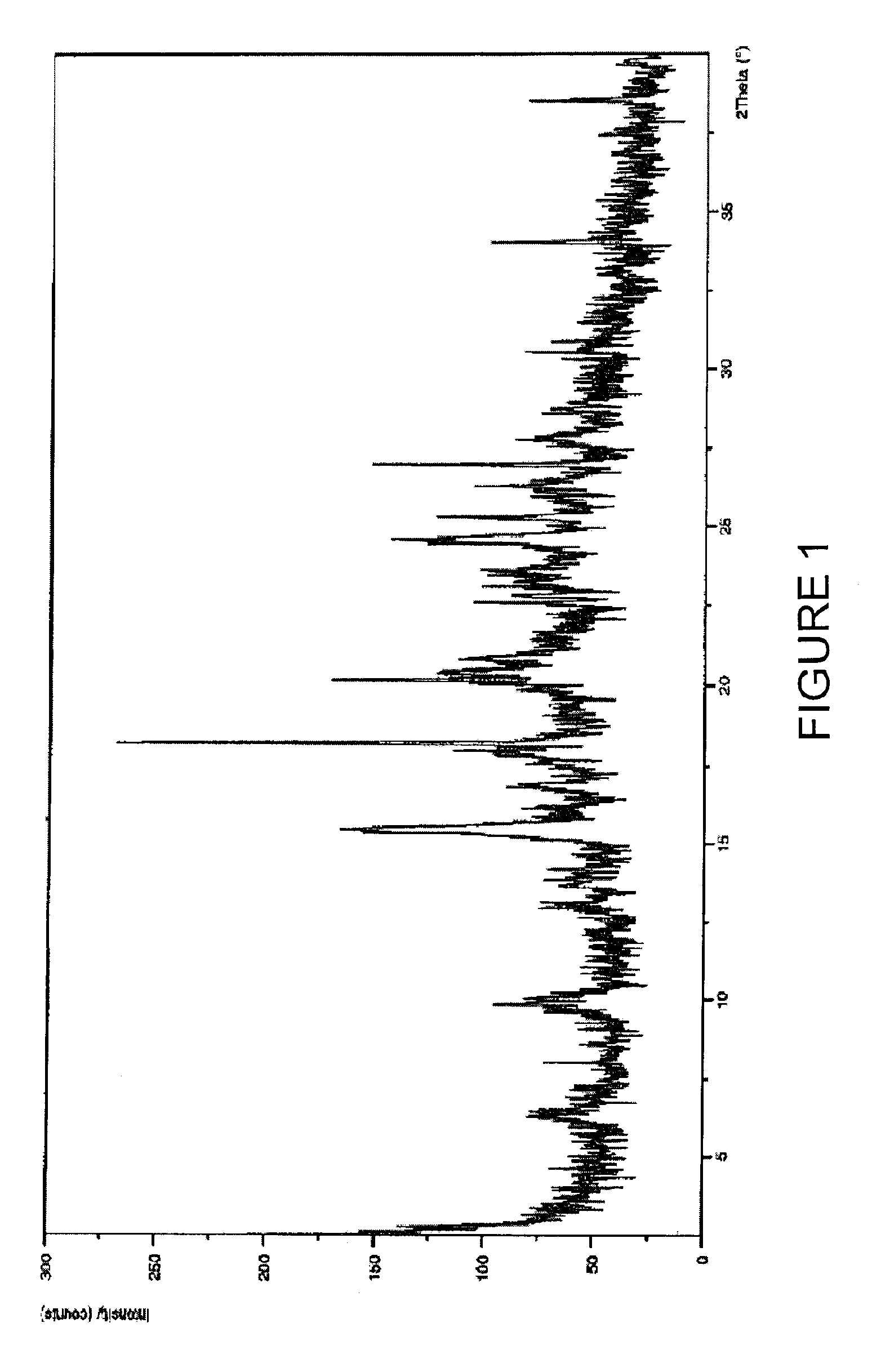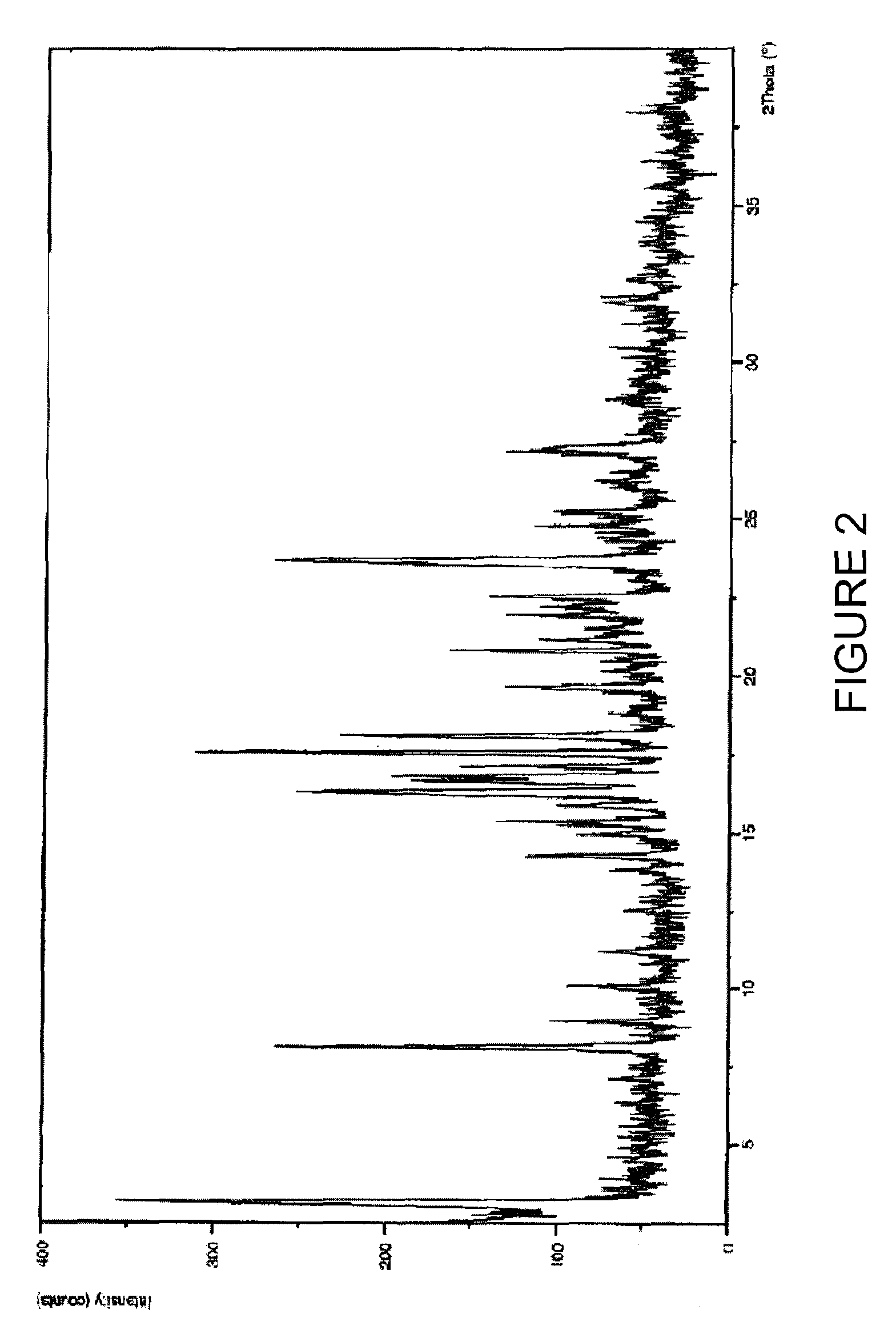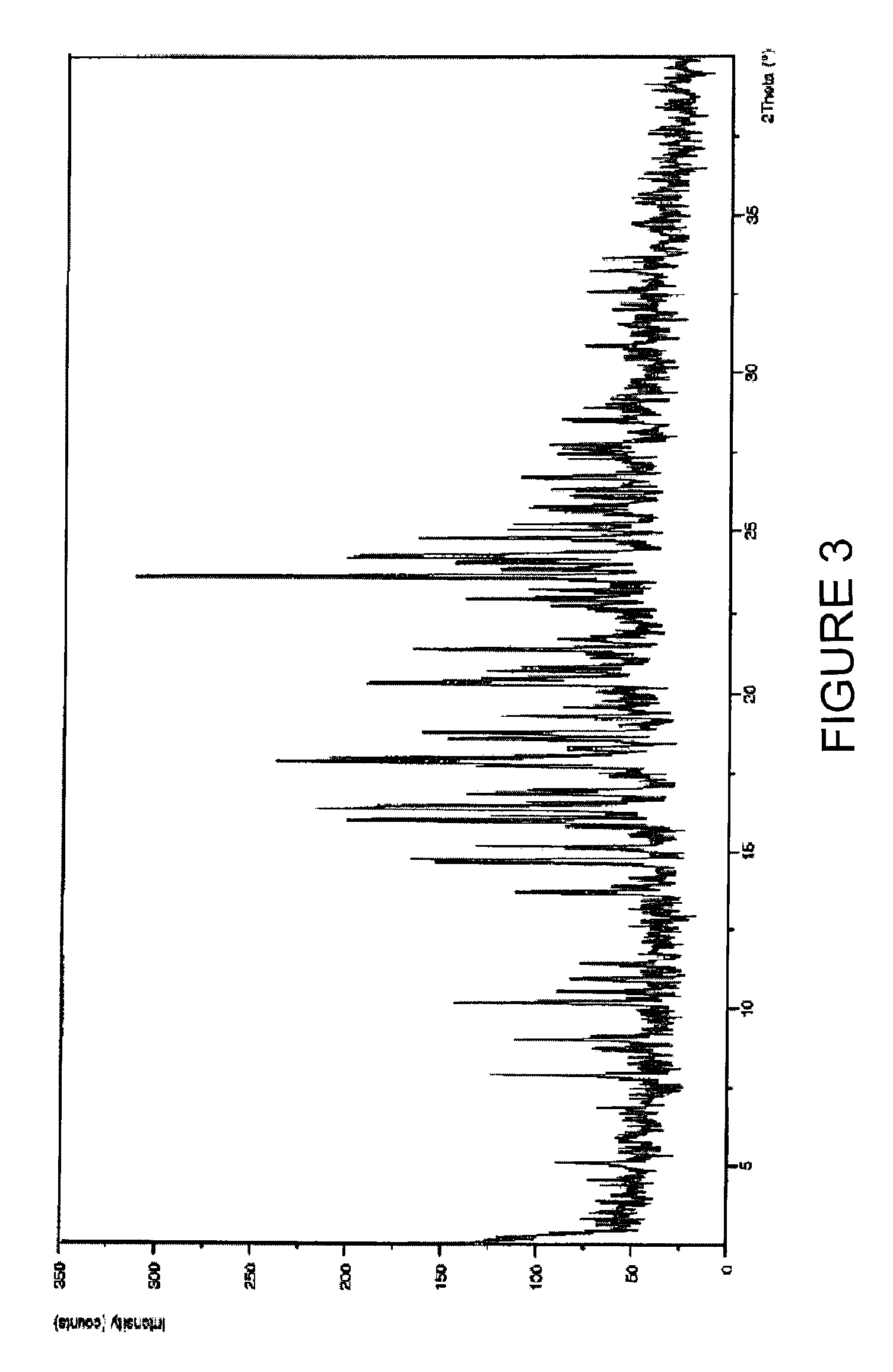Purification process of Montelukast and its amine salts
a technology of amine salt and purification process, which is applied in the field of purification process of montelukast and its amine salt, can solve the problems of low yield of intermediates and final products, inability to meet large-scale production requirements, and formation of several by-products, etc., and achieves high yield and high optical purity. , the effect of high optical purity
- Summary
- Abstract
- Description
- Claims
- Application Information
AI Technical Summary
Benefits of technology
Problems solved by technology
Method used
Image
Examples
example 1
Purification of Montelukast Acid Using Toluene as Solvent for the Extractions
[0055]45 ml of an aqueous solution of NaOH 0.5M were added to a 30 ml suspension of Montelukast acid (impurity i2: 0.05 area %; impurity i3: 1.39 area %; impurity i5: 0.20 area %; impurity i6: 0.05 area %) and toluene. A two layer solution was formed where Montelukast appeared dissolved in the aqueous layer as a sodium salt. After 30 minutes of stirring at 40° C., the organic layer was discarded. Another two more washes with 30 ml of toluene were successively carried out adjusting the pH each time between 12.2 and 13.2. The outcome aqueous solution was acidified to pH 9.3 with an aqueous 2M solution of acetic acid and washed twice with 30 ml of toluene. Both extractions were carried out at 60° C. Finally, another 30 ml of toluene were added to the aqueous solution and the mixture was acidified to pH 6.0 with an aqueous 2M solution of acetic acid at room temperature. The final organic layer was separated and...
example 2
Purification of Montelukast Acid Using Tert-Butyl Methyl Ether as Solvent for the Extractions
[0056]45 ml of an aqueous solution of NaOH 0.5M were added to a 30 ml suspension of Montelukast acid (Purity by HPLC: 97.4 area %; impurity i2: 0.05 area %; impurity i3: 1.39 area %; impurity i5: 0.20 area %; impurity i6: 0.05 area %) and tert-butyl methyl ether. A two layer solution was formed where Montelukast appeared dissolved in the aqueous layer as a sodium salt. After 30 minutes of stirring at room temperature, the organic layer was discarded. Another two more washes with 30 ml of tert-butyl methyl ether were successively carried out adjusting the pH each time between 12.5 and 13.5 at room temperature. The outcome aqueous solution was acidified to pH 9.2 with an aqueous 2M solution of acetic acid and washed twice with 30 ml of tert-butyl methyl ether at room temperature. Finally, another 30 ml of toluene were added to the aqueous solution and the mixture was acidified to pH 7.7 with a...
example 3
Preparation of Montelukast Acid
[0057]143.6 g of sodium hydroxide were added to a solution of 102 g of (R,E)-2-(1-((1-(3-(2-(7-chloroquinolin-2-yl)vinyl)phenyl)-3-(2-(2-hydroxypropan-2-yl)phenyl)propylthio)methyl)cyclopropyl)acetonitrile in 407 ml of ethanol 96% (v / v). The mixture was stirred at reflux temperature for 30 hours. After this period of time, the solvent was distilled off under vacuum (Purity by HPLC: 61.5 area %; impurity i2: 1.84 area %; impurity i5: 3.70 area %; impurity i6: 1.42 area %). The mixture was partitioned with 1000 ml of toluene and 1500 ml of water at room temperature. The aqueous phase with the inorganic salts dissolved, was discarded. The organic phase was mixed with 1500 ml of water and the mixture was heated to 60° C. and stirred for 15 minutes. At this point the product was dissolved in the aqueous layer. The pH of the aqueous layer was 12.5. Some impurities from the process were dissolved in the organic layer. Therefore, the organic layer was discarde...
PUM
| Property | Measurement | Unit |
|---|---|---|
| boiling point | aaaaa | aaaaa |
| temperature | aaaaa | aaaaa |
| temperature | aaaaa | aaaaa |
Abstract
Description
Claims
Application Information
 Login to View More
Login to View More - R&D
- Intellectual Property
- Life Sciences
- Materials
- Tech Scout
- Unparalleled Data Quality
- Higher Quality Content
- 60% Fewer Hallucinations
Browse by: Latest US Patents, China's latest patents, Technical Efficacy Thesaurus, Application Domain, Technology Topic, Popular Technical Reports.
© 2025 PatSnap. All rights reserved.Legal|Privacy policy|Modern Slavery Act Transparency Statement|Sitemap|About US| Contact US: help@patsnap.com



